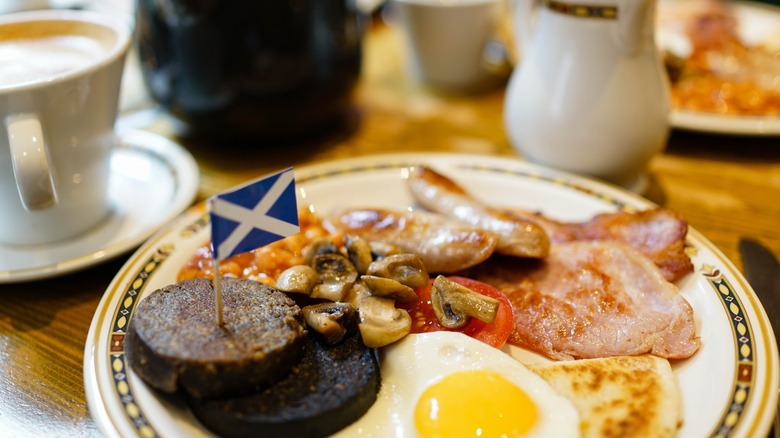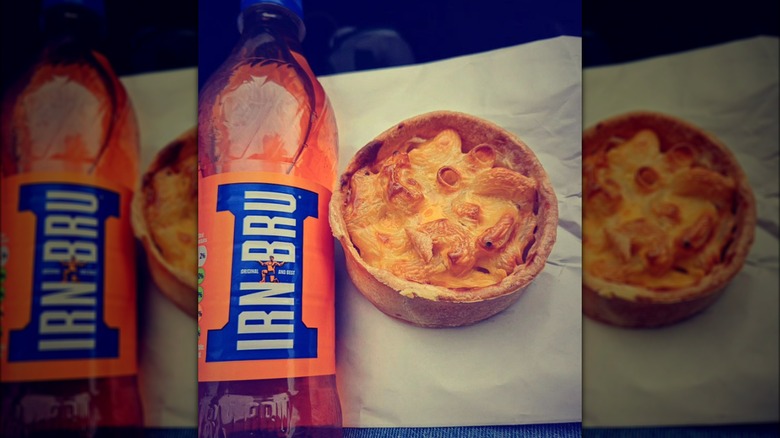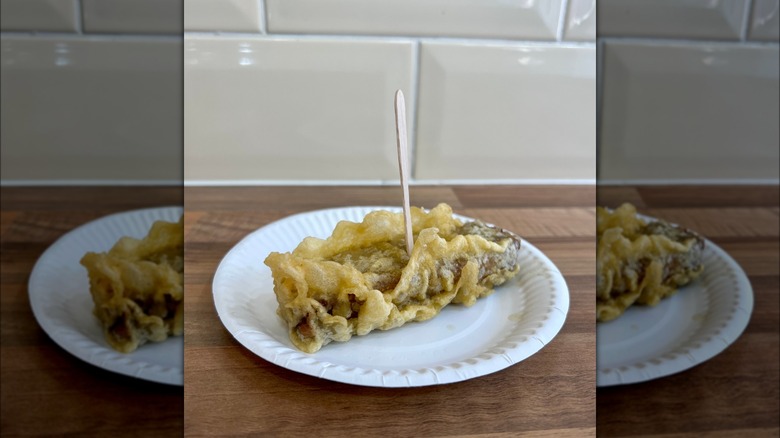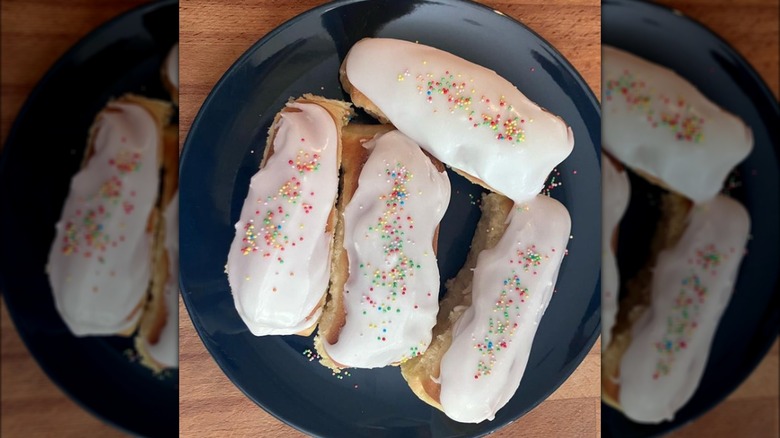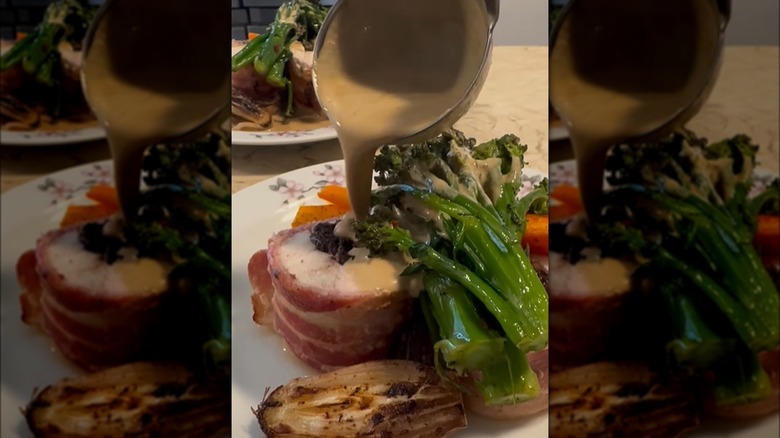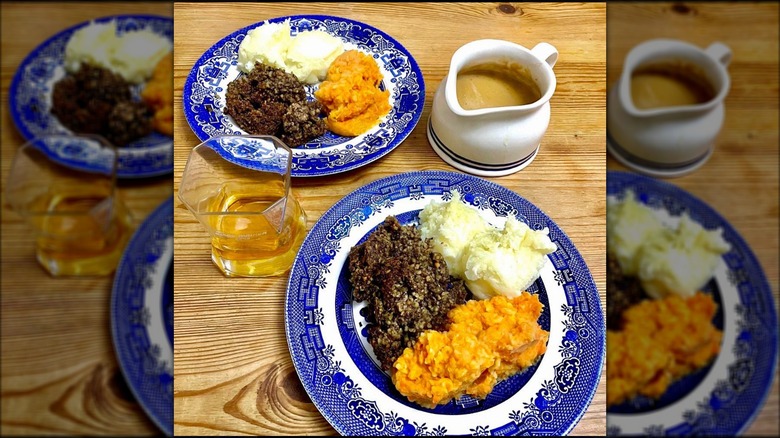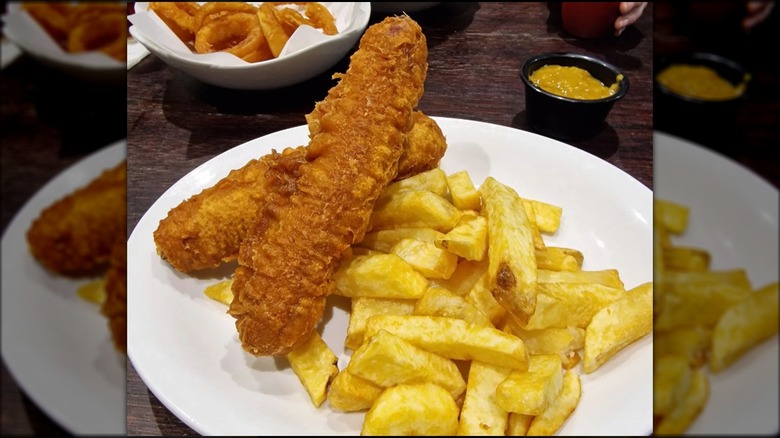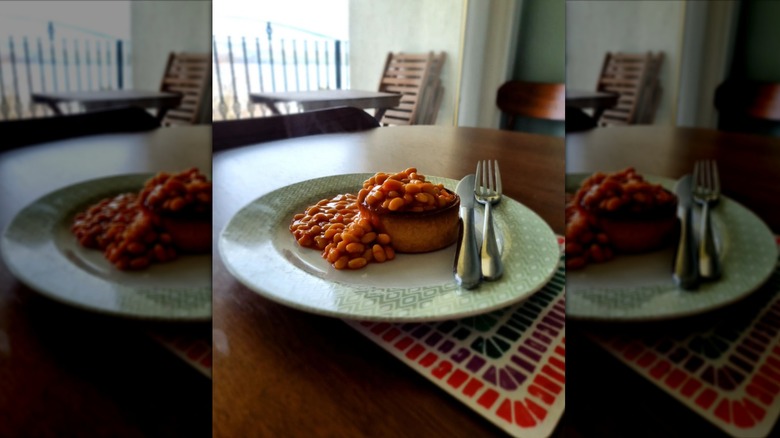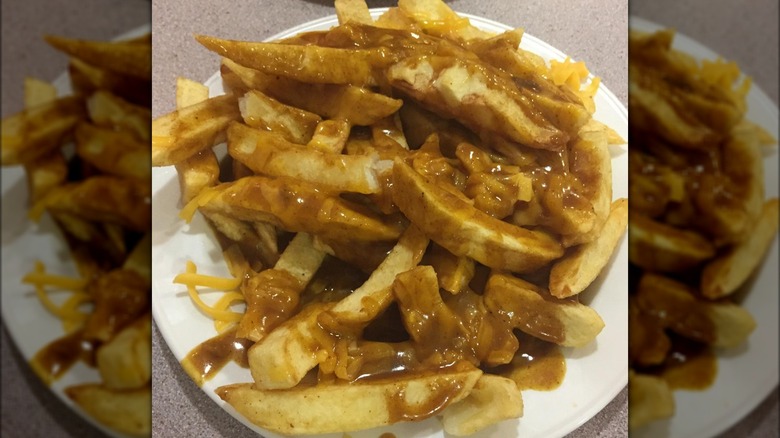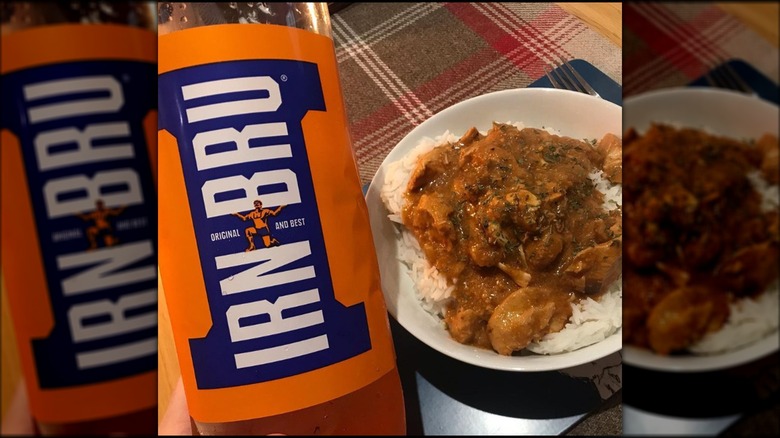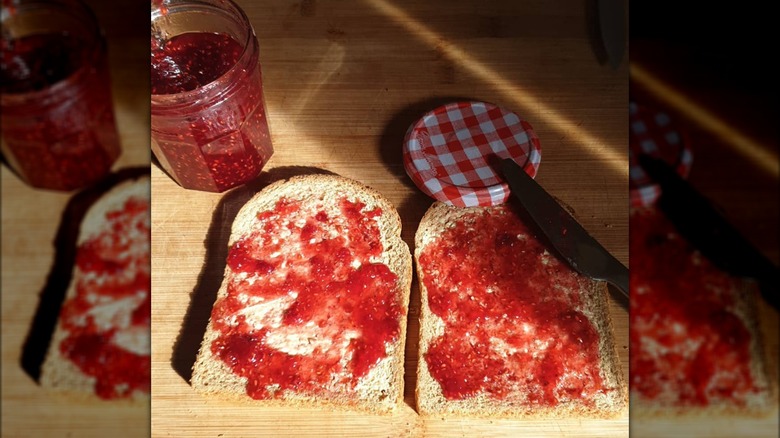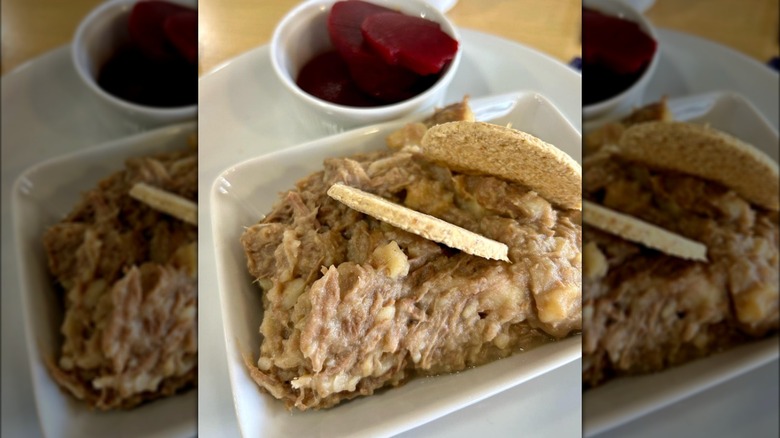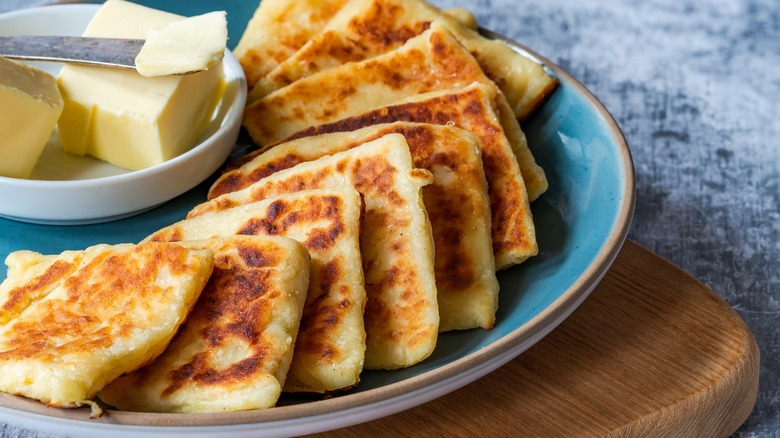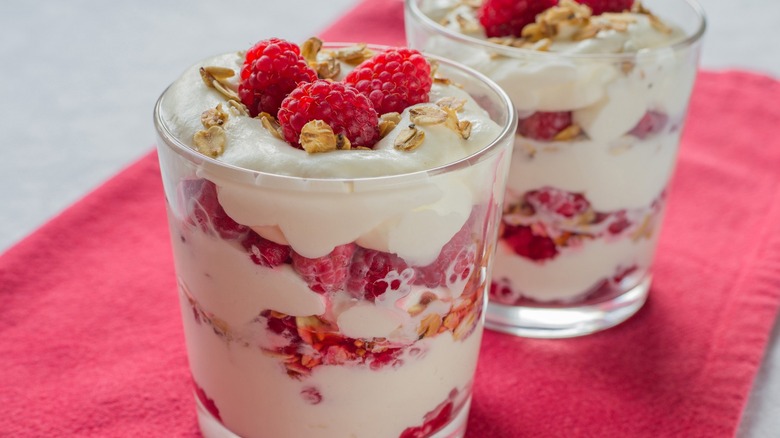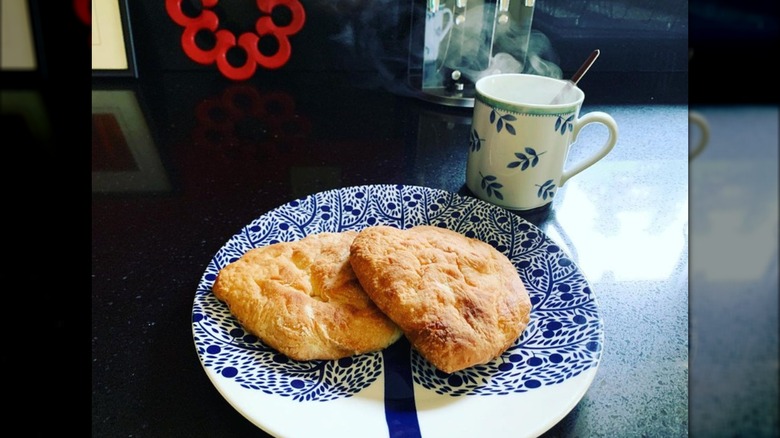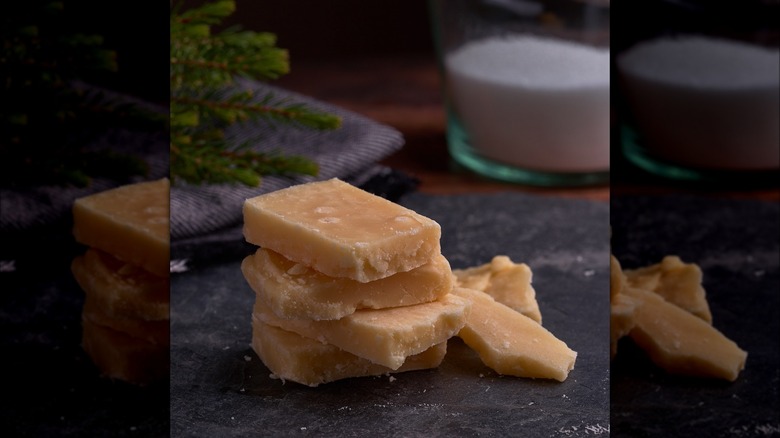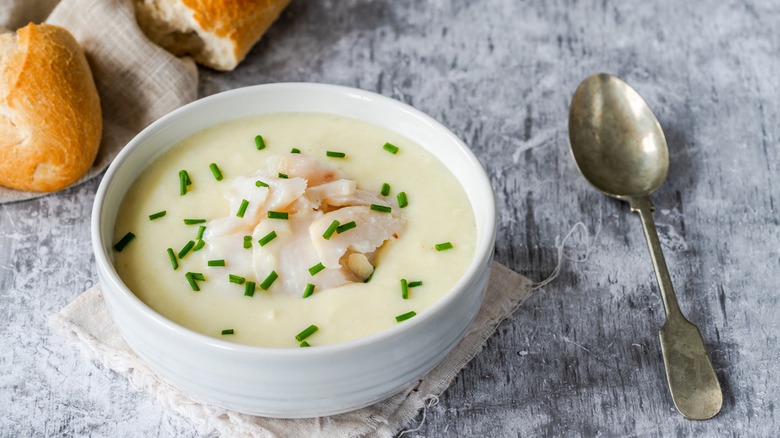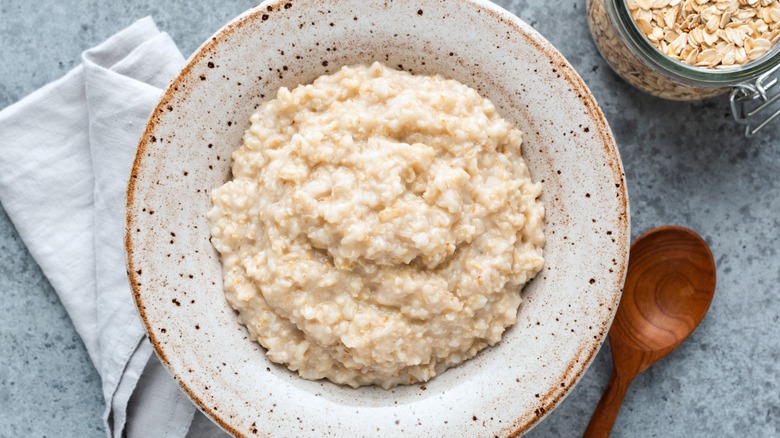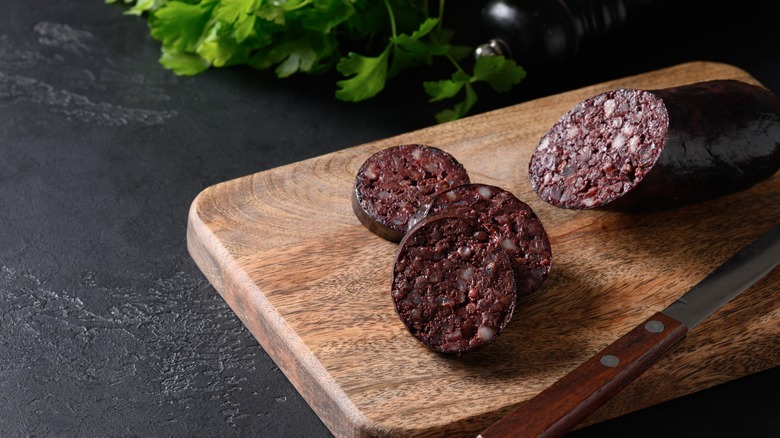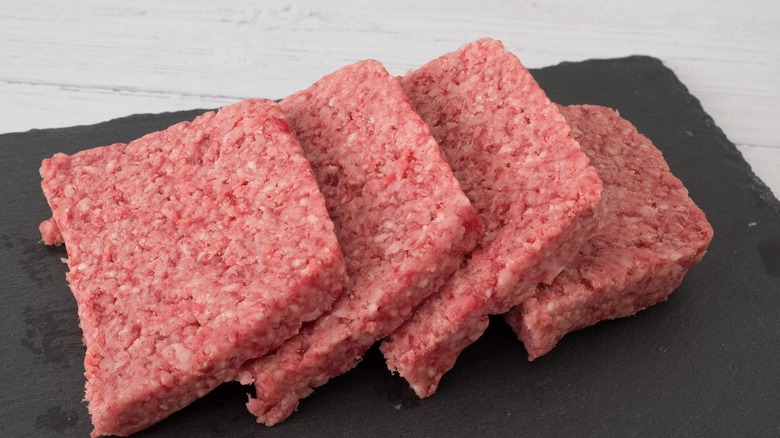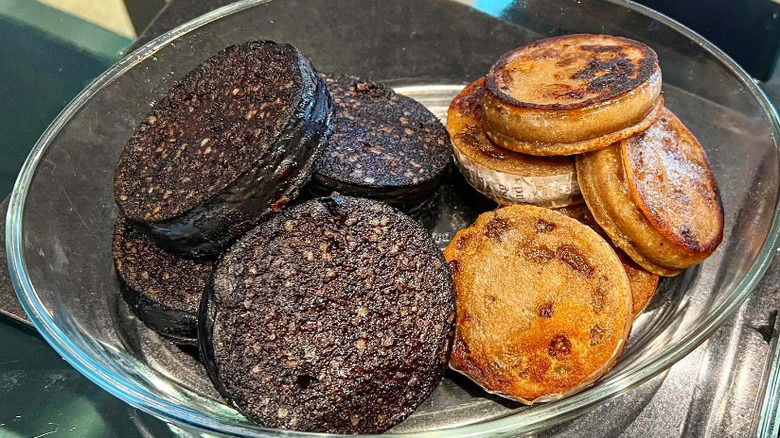20 Unique Scottish Foods You Need To Try At Least Once
Scotland, the land of the free and the home of the brave. It's a beautiful place to live and an even more beautiful country to enjoy a holiday. But did you know Scotland is also home to some pretty unique cuisine?
Scots are known for their love of cozy, warming food, and if you visit the country in the fall or winter months, it's easy to see why. From macaroni pies to deep-fried Mars bars, Aberdeen rolls to stovies, there are loads of delicious, unique Scottish foods out there to try. Even during the warmer months, there's plenty on offer to tempt you.
So, where should you start when exploring Scottish cuisine? We've done the hard work and rounded up 20 of the most unique Scottish foods that you simply have to sample. Whether you're in the mood for something sweet or savory, there's something on our list for everyone to try.
1. Macaroni Pie
Mac and cheese is classic comfort food, but the Scots take things one step further by putting one of our all-time favorite dishes in a pie.
It may sound odd, but weirdly, macaroni pie is absolutely delicious. It's usually served hot, with the mac and cheese positively oozing out of the crispy pie base. Some versions are more saucy, while others have a drier, tasty texture.
You'll find these delicacies in most chip shops in Scotland, as well as some more traditional cafes and restaurants. Yes, they're pretty stodgy, but they're also amazingly tasty, provided you don't mind the double dose of carbs. Strangely, the macaroni pie isn't actually unique to Scotland — you'll find it in Trinidad and Tobago, too.
2. Deep-fried Mars Bar
In Scotland, deep-frying things have become almost a kind of national pastime. So one day, somebody figured, why not deep-fry a candy bar? Why not, indeed?
But where did the deep-fried Mars bar come from? Some say it originated at an Edinburgh chip shop. Others claim it took root at a chip shop in Glasgow. But most people agree it was invented at the Carron Fish Bar in Stonehaven on the North-East coast of Scotland.
Though a Mars bar is the traditional candy bar to deep-fry, this can also be done with just about any other candy bar you can think of. It's dunked in batter and then deep-fried until the chocolate is meltingly delicious. It's surprisingly good.
3. Iced Bun
Only in Scotland could a hot dog bun be covered in icing and sprinkles and served as a cake. But don't knock it until you've tried it.
The key to finding the best iced buns around is to get one that's heavy on icing and sprinkles. Because this is such a simple treat, it's also imperative that the bun is fresh, not hard.
Iced buns can be found in most traditional Scottish bakeries as well as in supermarkets and can be made using a variety of breads. They're having somewhat of a resurgence, so you may even find street food stalls selling iced buns with various flavors of toppings and fillings such as cream or jam.
4. Balmoral Chicken
Chicken stuffed with haggis is on almost every Scottish restaurant menu in Edinburgh, the Scottish capital, and with good reason. This flavor combination is amazing.
Never tried haggis before? Balmoral chicken is a great introduction to it, as you'll enjoy a small portion of haggis stuffed into the moist chicken. It's often served with a creamy whisky sauce. Sometimes, the chicken is even wrapped in bacon, in case you need more meat.
Depending on the type of establishment you're visiting, this dish can come served with anything from a side of fries to mashed potatoes and roast vegetables. It's definitely a food you can't afford to miss on a trip to Scotland.
5. Haggis, Neeps, and Tatties
If you look into the ingredients of haggis, it's easy to be put off. And don't believe friendly locals who tell you they're going haggis hunting; plenty of people will try to tell you this if you're visiting Scotland — there's no such creature.
So what's actually in haggis, Scotland's national dish? It consists of finely minced lamb heart, liver, and lungs, mixed with oatmeal, onion, suet, and spices before being seasoned and stuffed into a skin for cooking. Traditionally, haggis were stuffed into a sheep's stomach for boiling, but artificial casing is used these days.
Haggis became iconic in Scotland following the publication of Robert Burns' poem Address to the Haggis in 1787. It became the dish served at a Burns Supper on Burns Night, held on January 25 in Scotland. At a Burns Supper, a bagpiper pipes the haggis into the room, and Burns' poem is read to address the haggis.
But what does it taste like? It's spicy, meaty, savory, and actually really delicious. You'll find it served with mashed potatoes, known in Scotland as tatties and mashed turnip or swede, which the Scots call neeps, traditionally with plenty of butter mixed into the veg. It's on many menus across the country, from pubs to high-end restaurants, and if you don't fancy a full plate of haggis, you could try a variation, like deep-fried haggis bon bons.
6. Battered Sausage
Though some will claim it's not ubiquitous to Scotland — and in a way, they're right, as you'll find it in chip shops up and down the United Kingdom — the battered sausage is undoubtedly a Scottish classic. You can't go wrong with deep-fried anything, particularly after a heavy night out when you want to soak up too many cocktails or glasses of wine.
Chip shop sausages are chunky beasts coated in a thick, hearty batter before being deep-fried and served with salt and vinegar sprinkled over. Some curry sauce for dipping is a pretty good addition.
If you're in Scotland and want chips, also called fries, with your sausage, ask for a sausage supper. It might sound strange, but it just means with fries, and it's a term used across Scotland.
7. Pie and Beans
Some might think of pies as an English tradition, but the Scots love them too. The best thing to eat with them? It has to be baked beans — ideally, Heinz.
In Scotland, there are so many different varieties of pies to choose from. You'll find everything from a traditional Scotch pie to a mince pie, a Forfar Bridie, chicken pie, and even a macaroni pie. There are pies filled with haggis, Balmoral chicken, and sweet-yet-spicy chicken curry pies to warm you up on cold Scottish days.
There are even shops dedicated solely to pies in most major Scottish cities. Pies are available from almost every traditional baker, too, as well as chains like Gregg's.
8. Chips and Cheese with Curry Sauce
Whether you call them chips or fries, the chips in Scotland are out of this world. Chunky, crispy, and covered in salt and vinegar — or salt and brown sauce, if you're in Edinburgh — chip shop chips are a must on any trip to Scotland.
There's one way to enjoy these deep-fried delights that stand head and shoulders above the rest: With melted grated cheddar cheese on top. Cheesy chips are great at the end of a night out, but they're equally good to warm you up on a cold day — and Scotland has plenty of those.
A side of curry sauce — or poured over the top — is another delish way to enjoy your chips. You could even combine cheese and curry sauce if you're treating yourself. You'll find chips and cheese or chips and curry sauce at every chip shop across the country.
9. Irn Bru Chicken
Irn Bru is considered to be "Scotland's other national drink," according to Independent, with whisky, of course, being the country's national beverage. This fizzy, bright orange soda has a loyal following and a secret recipe that contains 32 ingredients. You have to taste it to experience its unique flavor — it's impossible to describe.
It's perhaps not surprising, then, that Scots like to use it in a variety of meat dishes, the most popular being Irn Bru chicken. You can use it to create a sweet, sticky sauce or marinade for chicken wings or add it to your cooking sauce for a slow-cooker chicken dish. Either way, it's amazing.
10. Jeely Piece
Chances are, you have never heard of the term jeely piece unless you've either been to Scotland or have Scottish friends or family. It's simply a jam — or jelly — sandwich, but unlike the typical American peanut butter and jelly sandwich, there's no peanut butter in this sarnie.
The bread should be white, though the jury's out on whether thick or medium cut is best. There's even a song about the jeelie piece that was popular in Glasgow in the 1960s.
Make your own and take it out with you on your Scottish adventures for the most authentic results.
11. Stovies
Stovies is a dish that many Scottish kids grew up eating, so there's a deep sense of nostalgia attached to the recipe. Every family has their own take on it, which means how you make your stovies can actually be quite a divisive subject in Scotland.
Some Scots swear that traditional stovies are made with brisket or some kind of beef. Others use corned beef, with the resulting dish more like corned beef hash.
However you make it, it's basically mushed-up potatoes, onions, some cooking fat, and meat. Traditionally, lard or beef dripping was used as the fat of choice, but these days, many people use butter or even olive oil.
The key to this delicious dish is its slow cooking process. A pot of stovies can simmer on the stove for a few hours, filling your home with its savory aroma. It's usually served in a bowl or mug for a cozy, casual dinner and is the ultimate Scottish comfort food in winter.
12. Tattie Scones
You might spot these slightly odd-looking little flat triangles in Scottish supermarkets or bakeries. While they look almost like a triangular pancake, they're pretty heavy because they're made with potatoes or tatties, as they're known in Scotland.
Tattie scones are usually served toasted with lots of butter, or they can be fried if you're serving yours as part of a full Scottish breakfast. Salty, dense, and savory, they're surprisingly moreish and pretty filling, too.
Some people eat theirs with jam and a cup of tea or coffee as a morning snack. The sweetness of the jam is a pleasing contrast to the saltiness of the scone. Other people add a bit of cheese to their homemade tattie scones for a savory hit.
13. Cranachan
Cranachan is a traditional Scottish dessert found on many restaurant menus and often served at celebratory meals and wedding receptions. The cream is mixed with whisky and honey, then drizzled over oatmeal and fresh raspberries. Once upon a time, cranachan was served as a breakfast dish.
The name cranachan comes from the Gaelic word for churn, and this dairy-based dessert is beautifully smooth and creamy, with the fresh, fruity raspberries cutting through the rich cream. Some recipes use crowdie, a creamy cow's milk cheese, instead of cream.
It's one of the easiest desserts to make at home, too. Just don't forget to use an authentic bottle of scotch.
14. Butteries/Rowies
A treat that's native to Aberdeenshire in the North-East of Scotland, butteries, or rowies, as they're also known, are kind of like a flat croissant. These savory treats were originally made to fuel hungry fishermen at sea, as they were less perishable than other types of bread due to all the added fat and salt.
Today, they're a breakfast — or anytime — treat served lightly toasted and spread with even more butter and a cup of tea. If you've ever seen "The Hairy Bikers" cookery show, you might have seen the two Geordie chefs making their own butteries.
You don't need to make your own butteries, though. If you're in the Aberdeen area, they're readily available in most supermarkets and bakeries.
15. Scottish Tablet
Scottish tablet is a treat so sweet it makes your teeth hurt, however, it is well worth trying when you're visiting Scotland.
Sort of like fudge but even sweeter, tablet is crumbly, with a grainy texture rather than the smoothness of fudge. It only has a few ingredients: sugar, milk, butter, and condensed milk. It's extremely sweet from the butter and condensed milk, so you only need to eat a little bit at a time.
Tablet makes a great gift to take back home for friends and family. You'll find it in supermarkets and gift shops across Scotland. Perhaps you'll even be lucky enough to spot some homemade tablet at street food stalls or local markets.
16. Cullen Skink
Cullen skink is a traditional fish soup that originated in the small town of Cullen in the Moray region of Scotland. Though it was once on every restaurant menu across the country, today, you're more likely to find it in pubs or establishments serving classic Scottish fare.
It's well worth ordering if you do see it on the menu. Made from potatoes, onions, and smoked haddock, it has a flavor and texture similar to French bisque and U.S. chowder.
The smoky saltiness of the haddock makes Cullen skink incredibly delicious, while the potatoes add texture, ensuring it's a satisfying, hearty dish. Make sure yours is served with plenty of crusty bread for dunking.
17. Porridge
You're probably thinking that porridge isn't unique to Scotland, and you'd be right. But the Scottish way of serving it isn't with peanut butter, honey, bananas, or any of those sweet toppings.
Scots porridge traditionally uses fairly chunky porridge oats and a pinch of salt, which is said to bring out the flavor. Some think it's bland, and nowadays, plenty of Scottish people enjoy their porridge with a variety of toppings, but this is the traditional way.
There's a way that Scots stir their porridge, too. According to tradition, it should always be stirred clockwise with your right hand. Stir it the wrong way, and it was once said the Devil would come for you.
18. Black Pudding
While it's true that you can pick up black pudding almost anywhere in the world, the stuff in Scotland is amazing. Some say the best black pudding in the country comes from Stornoway — though in 2022, a butcher in Wemyss Bay won the coveted award for Scotland's best black pudding.
Black pudding is an essential part of a full Scottish breakfast. On the plate, you'll also usually find bacon, eggs, Lorne sausage, haggis, fruit pudding, beans, tomato, tattie scone, and sometimes some fried bread.
When you think about what's in black pudding, it doesn't sound the most appetizing — in that respect, it's a bit like haggis. It's made with grain, suet or fat, onions, seasoning, and pig's or cow's blood. It doesn't look the most appetizing when it's raw, either. However, when it's fried, it transforms into something delicious that you simply have to try on your next trip to Scotland.
19. Lorne Sausage
Lorne sausage looks quite unusual due to its chunky texture and square shape, and it may have been named after Lorne in Argyll.
This popular beef sausage is often part of a full Scottish breakfast — though you will find some establishments serve regular sausages instead. In the past, beef was much more popular than pork in Scotland, and Lorne sausage has been around for a long time, with its first known mention in "The Cook and Housewife's Manual" in 1826, where it was called "common beef sausage."
More heavily seasoned than regular sausages, Lorne sausage is packed with flavor. Scottish people often refer to it as square sausage or square slice. It's something you should definitely sample while in Scotland.
20. Fruit Pudding
The final food on our list you need to try next time you're in Scotland is something sweet and sometimes savory.
Fruit pudding used to be much more popular than it is today, served as part of a Scottish breakfast. Today, you'll mostly find it sold at butchers and supermarkets across the country as part of a breakfast with Lorne sausage and black pudding. It's not common on restaurant menus, though some traditional places still serve it.
This sweet and savory pudding is made with beef suet, oatmeal, cinnamon, brown sugar, and dried fruit — usually raisins and currants. It comes in a sausage shape designed to be sliced and fried, though in some shops, it's sold pre-sliced for convenience.
